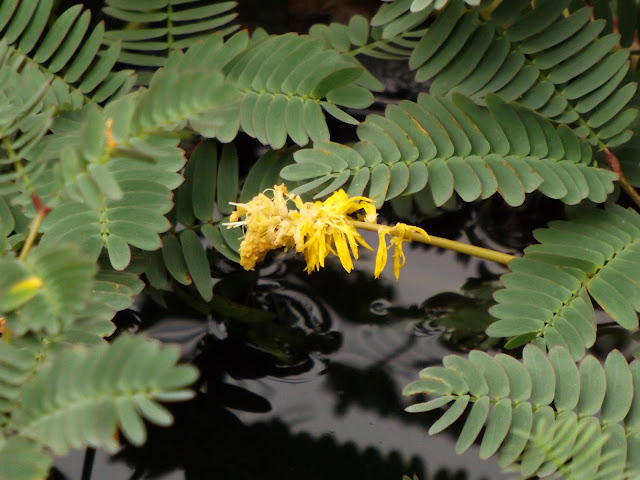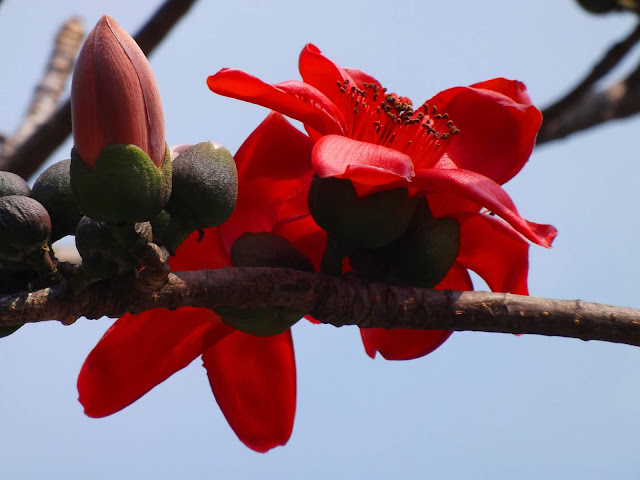Pani najok or Water mimosa, Neptunia oleracea
Pani najok or Water mimosa (Neptunia oleracea) is a creeping perennial aquatic herb, rooting at the nodes with spongy and slender stems, attaining a length of 2-3 m. The sensitive plant without prickles is found near or in water bodies, ditches, ponds and swamps all over Bangladesh sporadically. There are some doubts about the place of its origin. However, it has spread to both tropics.
Other names: Pani lajok, Pani lojuk, Pani lojjaboti (Bang); Sensitive neptunia (Eng).
Leaves are sensitive as other members of Mimosa, like Sensitive plant (Mimosa pudica). These are pinnately compound, petioled; leaflets 8-36, tiny, opposite.
Flowers are bright yellow, in pedunculated spike inflorescence, consisting of 30-50 flowers. Upper flowers are bisexual and lower flowers sterile. Flowering occurs at the end of rainy season.
Fruits are pods, flat, 2-3 cm long, dehiscent; seeds 4-8, obovoid, compressed. It is propagated by seeds and vegetative parts. The plant is cultivated and consumed as vegetable somewhere in Southeast Asia. As medicine, it is used as refrigerant and astringent. The aquatic plant can be planted as an ornamental herb in water gardens, botanical gardens and parks. However, outside of private and institutional gardens, it has become somewhat limited in Bangladesh.
Synonyms: Acacia lacustris, Desmanthus lacustris, Desmanthus natans, Desmanthus stolonifer, Mimosa aquatica, Mimosa lacustris, Mimosa lacustris, Mimosa natans, Mimosa prostrata, Neptunia natans, Neptunia prostrata, Neptunia stolonifera.





29478E6F8E
ReplyDeleteTakipçi Satın Al
Whiteout Survival Hediye Kodu
Google Konum Ekleme
Kafa Topu Elmas Kodu
Pubg New State Promosyon Kodu